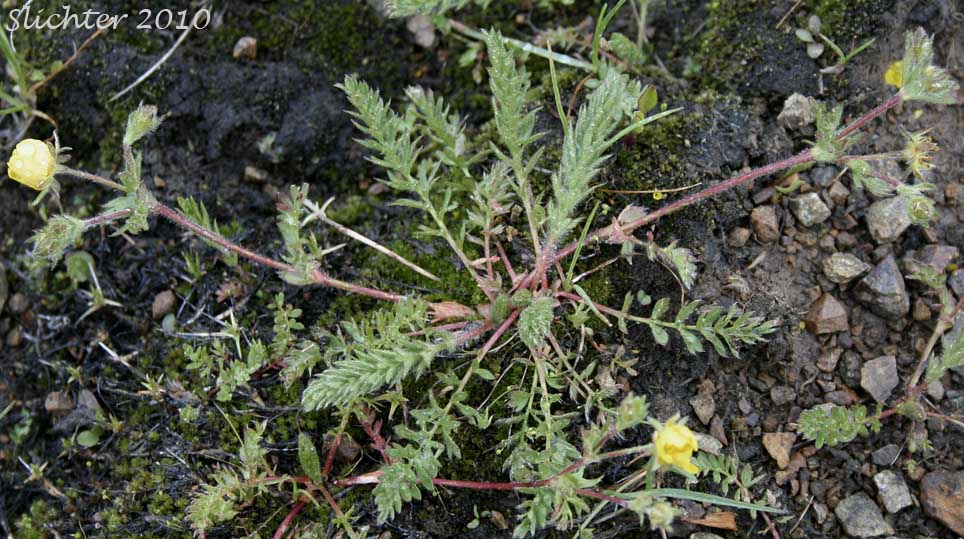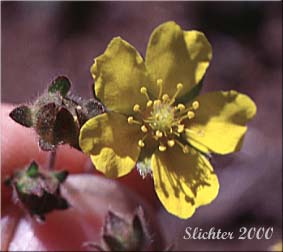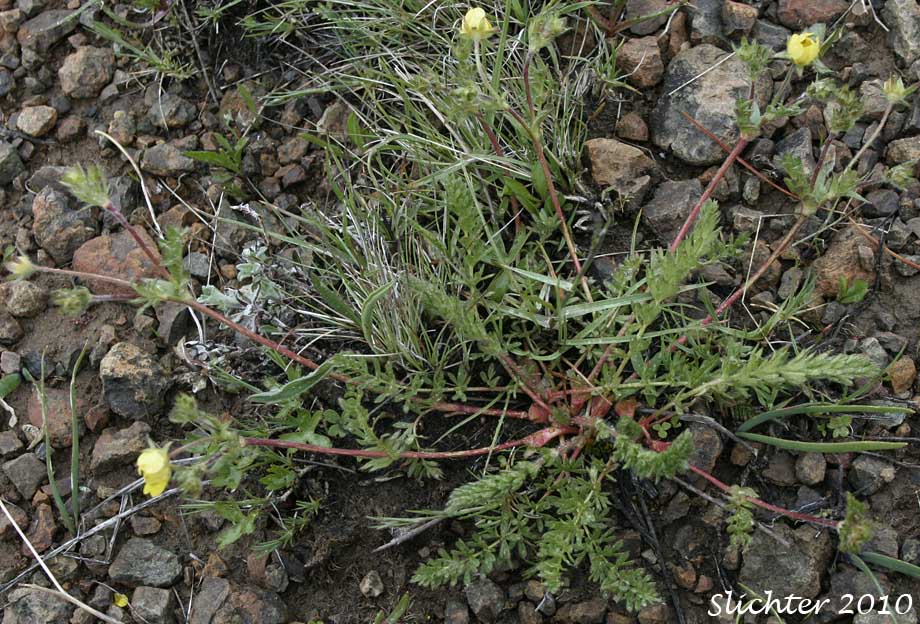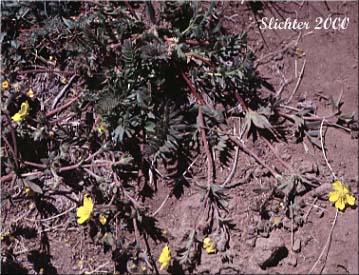[Cinquefoils: The Genera Comarum, Dasiphora, Drymocallis and Potentilla in the Cascade Mountains of Oregon and Washington]
Klamath Cinquefoil, Sheep Cinquefoil, Steen's Mountain Cinquefoil, Varying Cinquefoil
Potentilla versicolor
Synonyms: Potentilla dissecta var. decurrens, Potentilla klamathensis, Potentilla millefolia, Potentilla millefolia var. klamathensis, Potentilla nelsoniana, Potentilla ovina, Potentilla ovina var. decurrens, Potentilla ovina var. ovina, Potentilla ovina var. pinnatisecta, Potentilla wyomingensis

Sheep cinquefoil as seen atop Baldy Mountain, Strawberry Mountain Wilderness.......July 1, 2010.
 Photo
at right is of the flower of of Potentilla versicolor at Kiger Gorge Viewpoint,
Steens Mt.......June 24, 2000.
Photo
at right is of the flower of of Potentilla versicolor at Kiger Gorge Viewpoint,
Steens Mt.......June 24, 2000.
Characteristics:
Varying cinquefoil is a low, ascending perennial with pinnately
compound, greenish leaves. The herbage may be sparsely haired to nearly glabrous.
The 12 or more leaflets are deeply and unevenly cut intl linear to oblong lobes.
The inflorescence is an open cyme of 2- 7 yellow flowers. The
calyx or hypanthium is bowl-shaped and rarely more than 1 cm in diameter. Each
of the 5 petals is obcordate and roughly 1-2 cm longer than the sepals. There
are usually 20 stamens and numerous pistils.
Varying cinquefoil is similar to Brewer's cinquefoil
(Potentilla breweri) with which it hybridizes, but the latter plant is grayish
white and silky villous in herbage, and generally has 11 or fewer, divergent
leaflets.
Habitat:
Varying cinquefoil may be found in rocky, moist meadows, open
ridges, and barren slopes from mid-altitudes to above timberline.
Range:
Varying cinquefoil may be found at high elevation in souh-central
Oregon and possibly in the Wallowa Mts. of northeast Oregon.
 -
- 
Additional photos of sheep cinquefoil as seen atop Baldy Mountain, Strawberry Mountain Wilderness........July 1, 2010.
 -
- 
Steen's Mountain cinquefoil as seen at the Kiger Gorge Viewpoint,
Steens Mt.......June 24, 2000. The similar Brewer's cinquefoil (Potentilla breweri / Potentilla drummondii var. breweri) may be found at the same locations, but tends to be grayer than the plants seen here. Hybrids are often seen between the two species where they do occur together.
Paul Slichter
 Photo
at right is of the flower of of Potentilla versicolor at Kiger Gorge Viewpoint,
Steens Mt.......June 24, 2000.
Photo
at right is of the flower of of Potentilla versicolor at Kiger Gorge Viewpoint,
Steens Mt.......June 24, 2000.